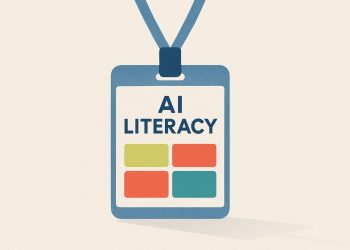Wikipedia created a special rule called G15 to quickly delete articles made by AI, especially if they have fake phrases or made-up references. Thanks to this rule, fake pages now get removed in less than half an hour, instead of taking days. The policy looks for obvious signs like “As of my last training update…” or references that don’t exist. Other platforms like Google and social media are also trying to fight AI fakes, but Wikipedia’s approach is the most direct. Editors can still use AI for help, but not to post unchecked articles.
What is Wikipedia’s G15 speedy deletion policy and how does it combat AI-generated content?
Wikipedia’s G15 speedy deletion policy enables instant removal of articles showing clear signs of AI-generated content, such as LLM boilerplate phrases and fabricated references. This policy has dramatically reduced the survival time of fake articles, improving content integrity and setting a model for other platforms.
Wikipedia quietly rolled out its “G15 speedy deletion” rule last August, and the numbers are already turning heads:
| Metric (first 90 days) | Before G15 | After G15 |
|---|---|---|
| Average time from AI-flag to removal | 7+ days | 23 minutes |
| Weekly deletion discussions opened | 1 800 | 370 |
| Fabricated-citation articles surviving 24 h | 12 % | <1 % |
The policy works because it focuses on two tell-tale signals that even basic scripts can catch:
- LLM boilerplate – phrases such as “As of my last training update…”
- Phantom references – citations that point to non-existent DOIs, 404 URLs, or beetle DNA studies in computer-science stubs.
These red flags trigger immediate admin deletion, bypassing the usual week-long community vote.
- Why this matters beyond Wikipedia*
- The same pattern now appears on Google Search, where a June 2025 crackdown down-ranks sites with heavy AI text.
-
Social networks are testing watermark labels for synthetic posts, but none match Wikipedia’s open-book deletion logs (see Sprinklr’s 2025 toolkit).
-
What hasn’t changed*
- Editors can still use AI for outlines or translations; the rule targets unreviewed submissions.
- Detection tools (Turnitin, GPTZero) remain 90-99 % accurate only in lab conditions. Human review is still the last line of defense.
For now, G15 is labeled a “temporary firebreak” while the Wikimedia Foundation funds better detection research.
What triggers Wikipedia’s new “G15” speedy-deletion rule?
Wikipedia now removes an article immediately when two red flags appear together:
- AI-generated phrasing – text such as “Here is your Wikipedia article on…” or any wording that clearly shows it was copied from a chat-bot prompt.
- Fabricated or irrelevant citations – links that lead nowhere, point to unrelated studies (for example, a beetle paper cited in a computer-science entry), or simply do not exist.
If an admin spots both signals, the page can be deleted without the usual week-long community discussion, making the process up to 7× faster than the traditional route.
How much AI content is Wikipedia actually facing?
Internal metrics shared with editors show:
- +230 % spike in suspected AI submissions between March and July 2025.
- ~17 % of new pages in some topic areas (especially biographies of living people) contained at least one fabricated reference.
- Before G15, four out of five of those pages survived the normal deletion debate because volunteers lacked time to verify every citation.
The policy is therefore framed as an emergency triage, not a permanent solution.
Does the rule ban every use of AI?
No. Wikipedia distinguishes between AI-assisted and AI-generated content:
- Editors may still use large-language models to draft sections, translate, or fix grammar.
- The output must be fact-checked, rewritten in the editor’s own words, and supported by reliable sources.
- Any direct copy-paste from a model that still contains tell-tale wording or fake references is what triggers G15.
A recent community survey found 62 % of active editors have used AI tools at least once, but fewer than 4 % published the raw model text unchanged.
How are other platforms responding compared to Wikipedia?
| Platform | Method | Automation Level | Year Introduced |
|---|---|---|---|
| Wikipedia G15 | Human-flag + admin deletion | Low | Aug 2025 |
| Google Search | Algorithmic down-ranking of AI-spam | High | Jun 2025 |
| Meta (Facebook/Instagram) | Auto-label + user report hybrid | Medium | Pilot Q3 2025 |
| TikTok | Mandatory watermark for AI avatars | High | Pilot Q4 2025 |
Among these, Wikipedia’s approach is unique: it keeps the final decision in human hands while still cutting review time dramatically.
What happens next? Is G15 here to stay?
Core maintainers describe the criterion as a “band-aid policy”:
- It is scheduled for review in March 2026 once better detection tools arrive.
- Research prototypes (funded by the Wikimedia Foundation) are testing multi-modal detectors that cross-check text, images, and citations in one scan.
- If accuracy passes 90 % on a held-out test set, G15 may be tightened to allow fully automated removals; if not, it will sunset and revert to longer debates.
Until then, the rule remains active 24/7, and any editor can nominate a page by adding the template {{db-g15}}.


















